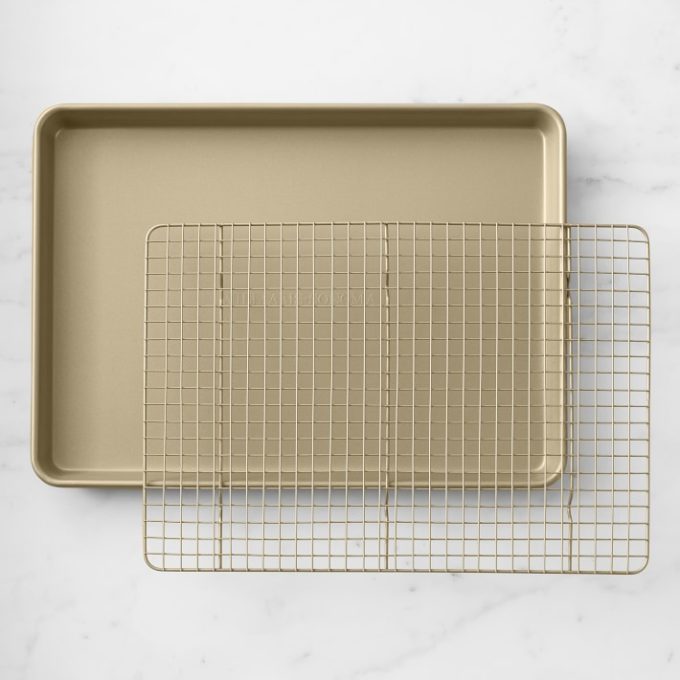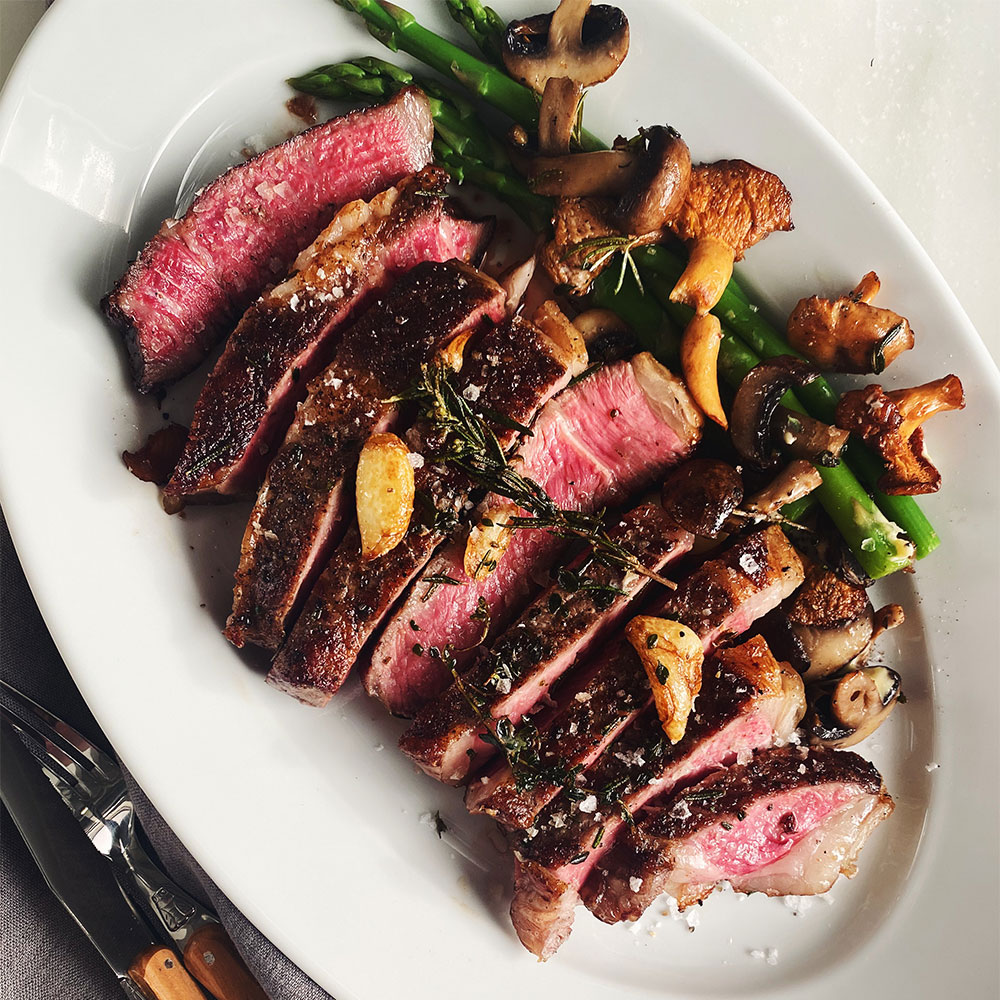
A “cheffy” trick a lot of us carnivores—OK, “meatheads;” we’ll take it—love is searing our steaks in a skillet, stovetop before throwing it into an oven. It’s the traditional way, and as is true of sous-vide, it can deliver great results.
But do you reverse-sear, dude?
Spring is an excellent time to try new things. Reverse-searing should be one of them. It takes a little longer, but it’s pretty much the best way to get a crisp-edged steak.
As Belle English, our test kitchen director, attests in the video here, reverse searing—in which you first cook a steak low and slow in an oven, then sear and serve it—works beautifully because “it dries out the steak while it’s in the oven; moisture is the enemy of anything crispy.” She likes her steaks with “really nice crispy crusts.” (Who doesn’t?) Also, as J. Kenji López-Alt points out in this excellent 101, the idea that searing steak before cooking it “locks in juices” has been proven false. Dry-searing can result in more even cooking, more tender meat, better browning, and more flexibility.
Well, then. With that in mind, let’s walk through the easy, accessible steps you need to reverse-sear a steak deliciously.
1. Dry and Season Your Steak
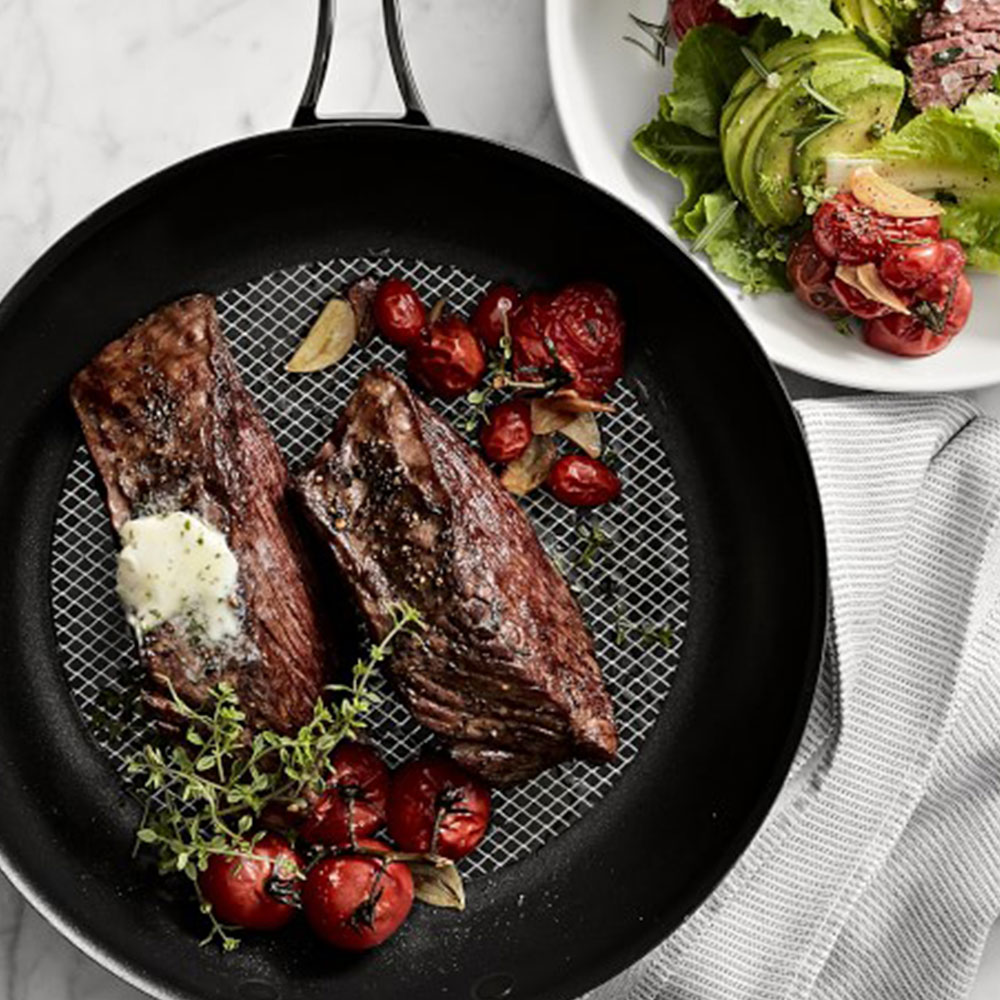
Select a steak that’s at least 1.5 inches thick; you will not get good results with that skinny skirt steak. (Belle liked a ribeye for our video!) Remove any excess moisture from the surface of the steak by blotting it dry with paper towel, then season it generously. The thicker the steak, the more salt and pepper it can handle. (If you can, season it with salt the night before you cook it.)
2. Preheat the Oven
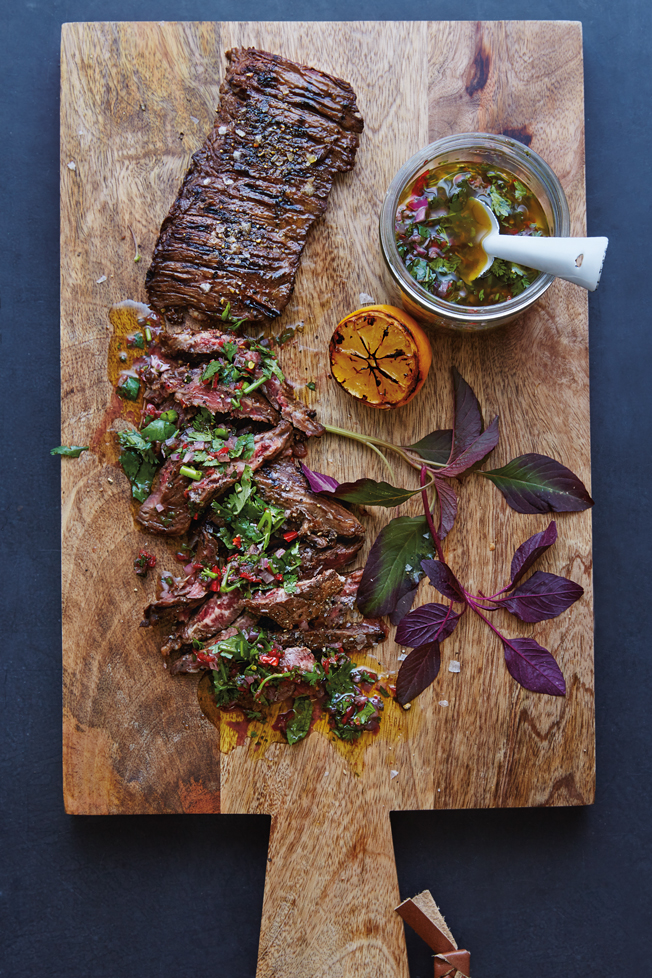
For our video, we cooked the steak at 200 degrees for about an hour. Think: barbecue. Low and slow is what you want, because it essentially “rapidly dry-ages” the steak. Use that time to set the table, make your side dishes, or do some kitchen karaoke to Van Halen’s “Dance the Night Away.”
3. Bake Steaks on a Rack in a Sheet Pan
You want the heat circulating your meat evenly while it’s in the oven. One of the gorgeous benefits of this method is how evenly it cooks the meat while keeping the exterior dry and crispy. Take advantage of that! Place the steak on a cooling rack nestled inside a sheet pan.
4. Underbake the Steak
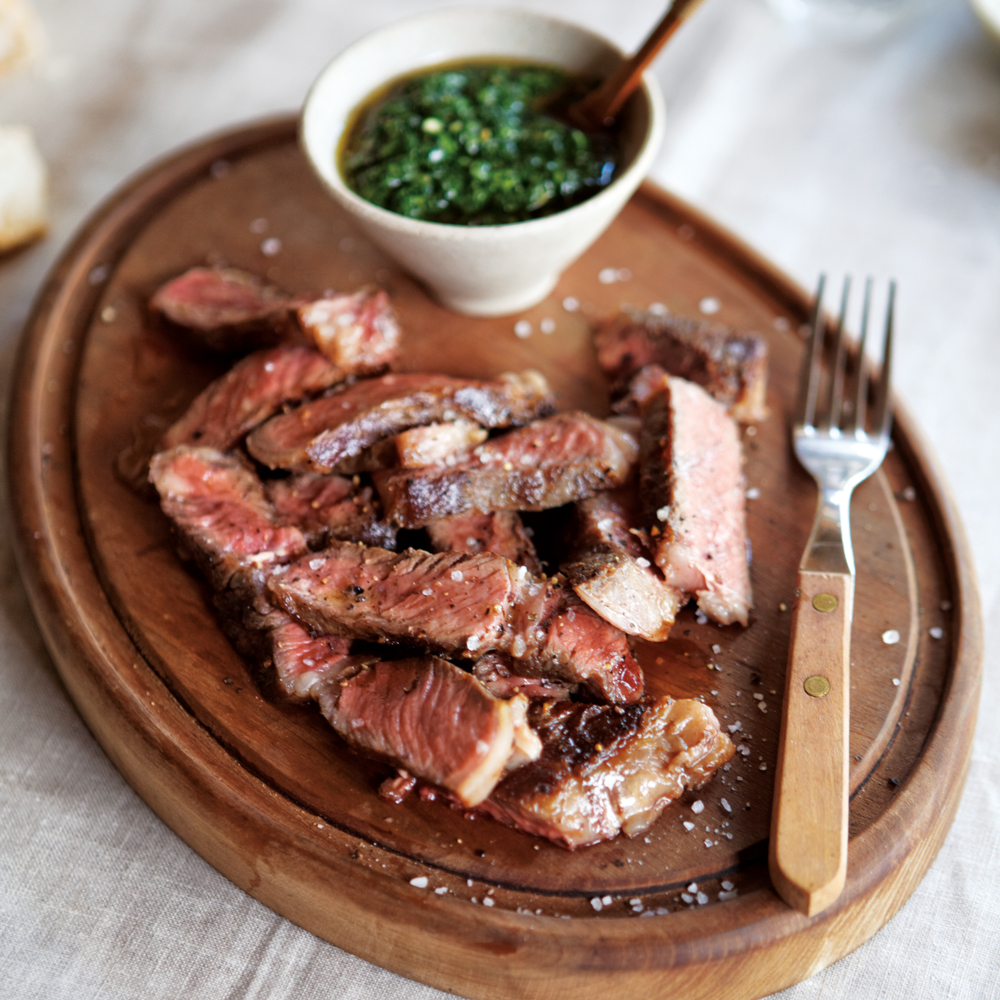
OK, if you like your meat medium-rare, pull it out at 115˚F/46˚C (or about 10˚F less than your end temperature). It’ll come up to around 125˚F/52˚F for medium-rare by the time you finish searing it. Start pre-heating that skillet. Cast-iron skillets are the most likely choice, but a really good nonstick skillet like the Anolon X, which utilizes a SearTech™ stainless steel mesh in the pan bottom to keep oil and the meat directly over the heat, can work beautifully, too.
5. Sear over High Heat with a High “Smoke Point” Oil
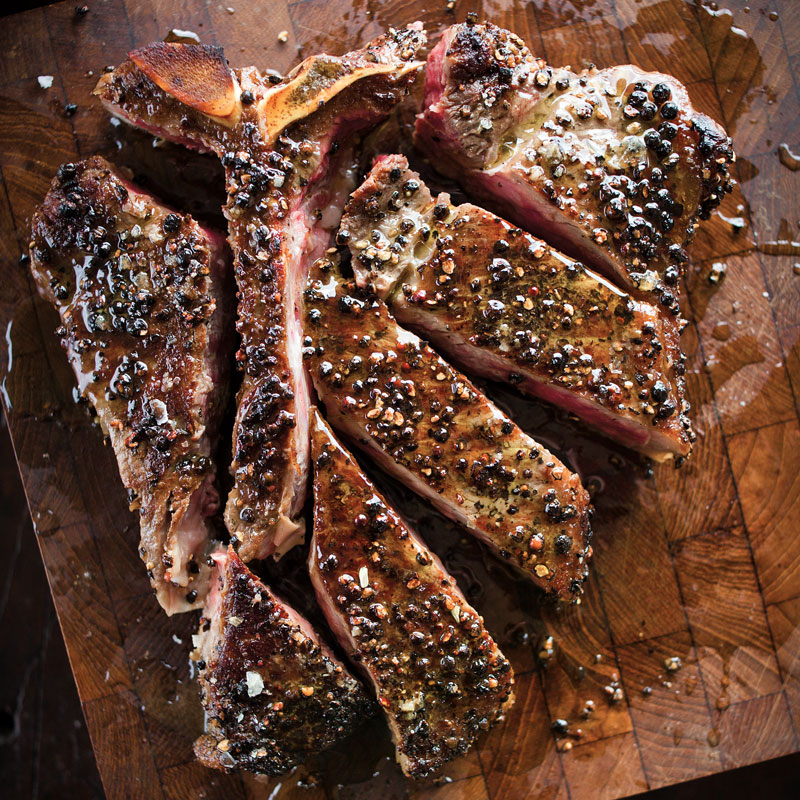
Common error alert! When you are searing your steak over high heat, you want to use a neutral oil like canola or vegetable with a high “smoke point.” Olive oil and butter are no good for this job; they will burn. Place your steaks in hot oil over medium-high heat for 45 seconds, until a good crust forms. Flip.
6. Finish With Butter and Herbs
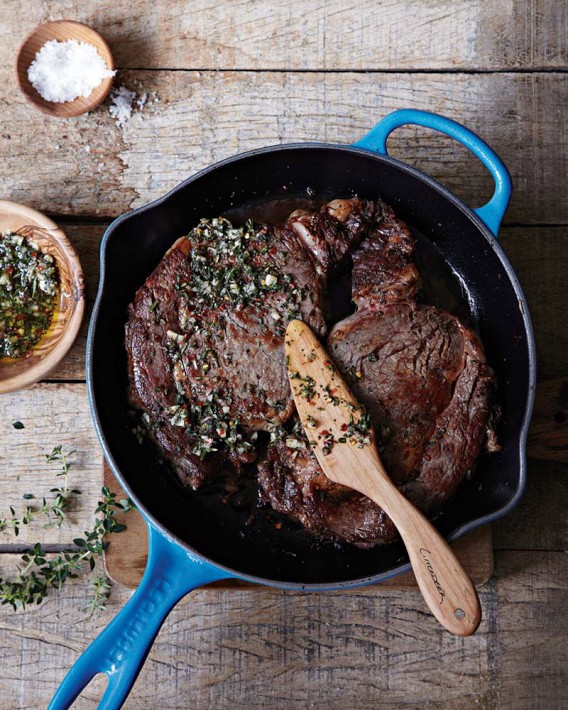
After flipping your steak(s), give them 15 seconds or so to get that second-side crust going, then start basting them like you’re in cooking school, chef. You’re adding a knob of butter and a sprig or two of fresh herbs (Belle likes thyme and rosemary), plus a couple of crushed garlic cloves. Tip the pan as you work, keeping the steak over the belly of the flame, and baste away with spoonfuls of oil until you’re satisfied with the crusts on both sides. (Pro tip: If you have a nonstick pan like Anolon X that can handle this high heat searing action, it’s half the weight of traditional cast-iron, so this is easier!) If the herbs start to burn, place them on the steak. Transfer to cutting board.
7. Serve
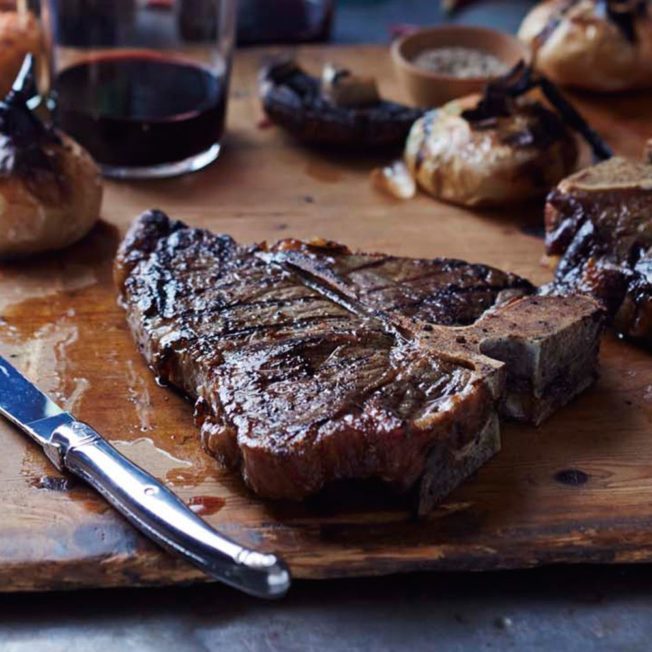
Perhaps the best part of this technique? Instant gratification. You don’t need to let these steaks rest more than a minute before serving. Everyone on the house will be on top of you for a bite by this time anyways, so it works out! Serve with compound butter, with a flourish of sea salt on top, or simply with a high-five. Good work out there.

